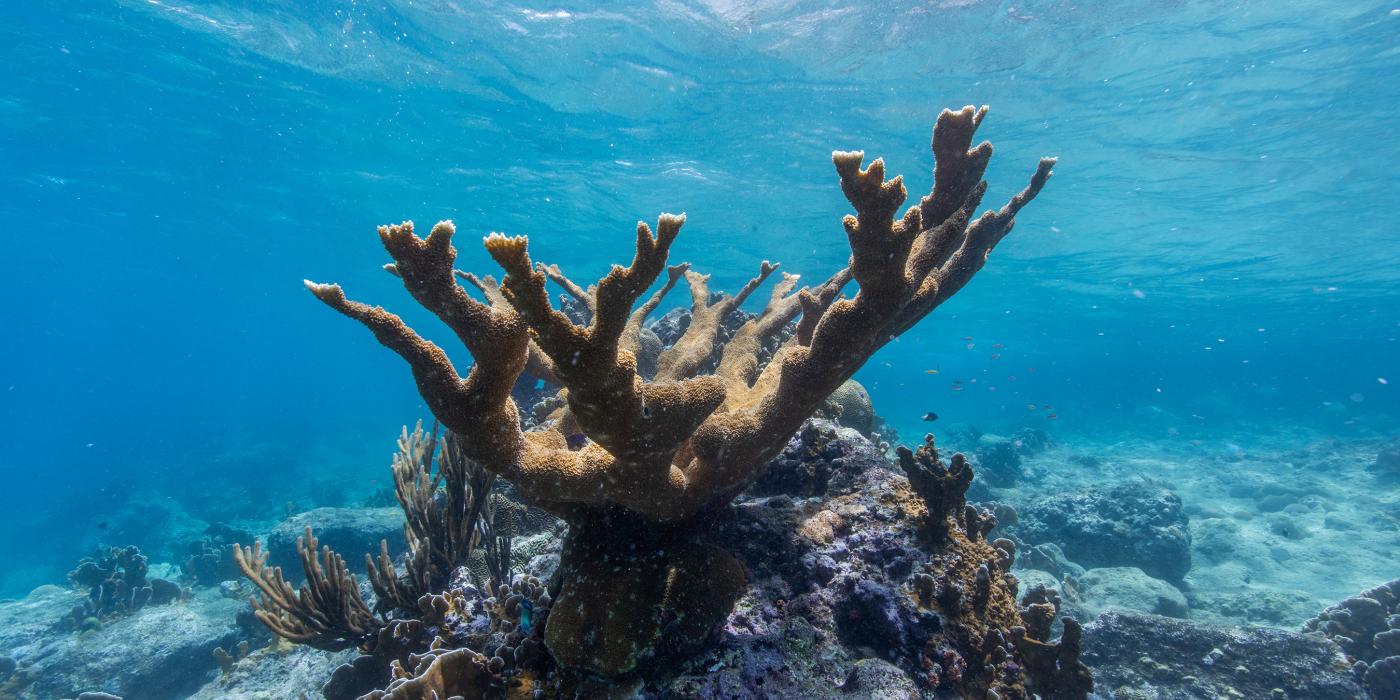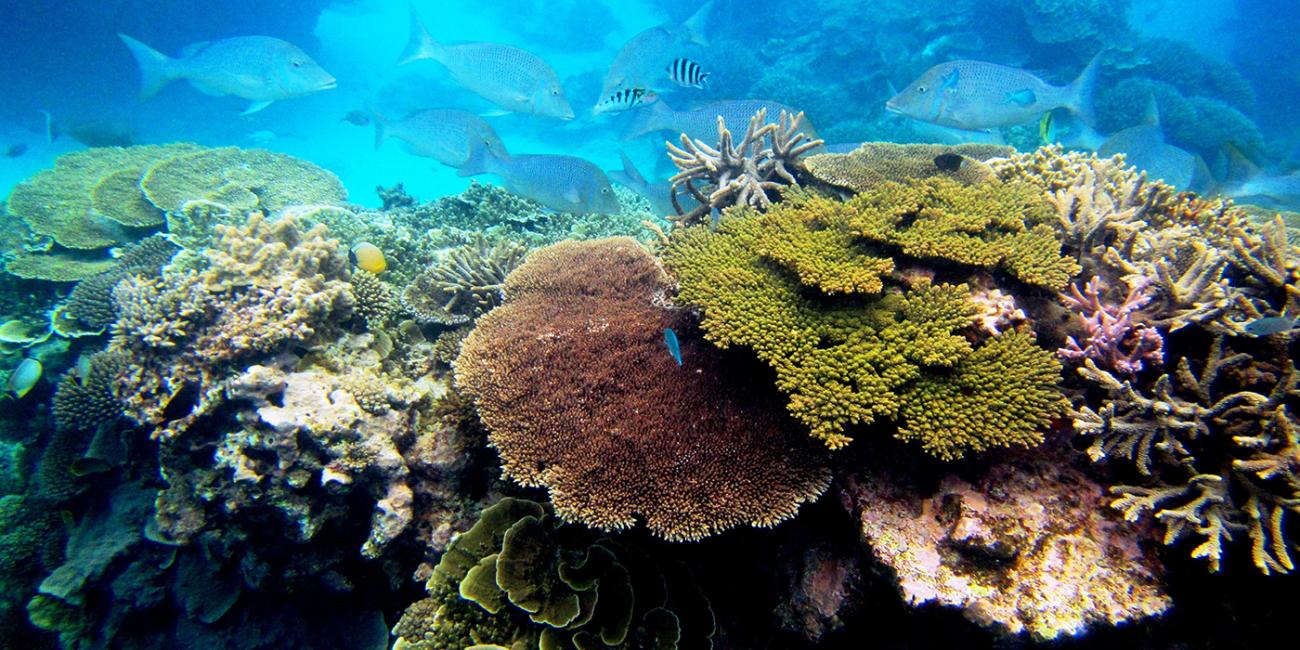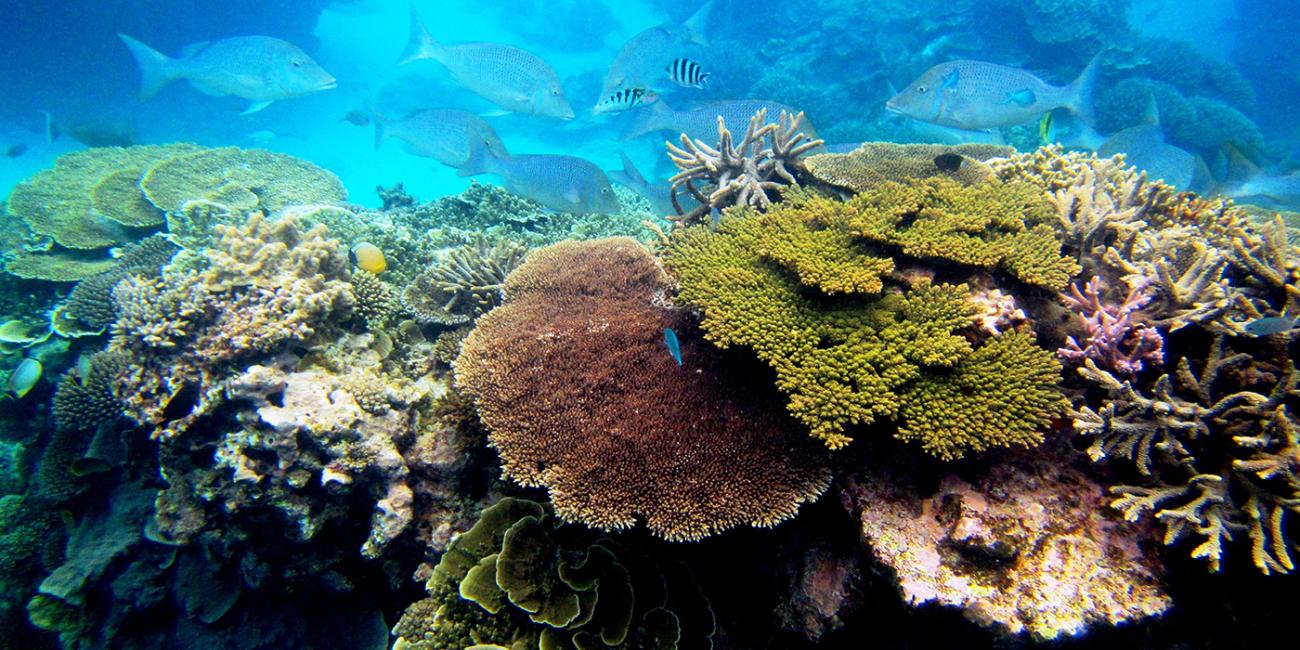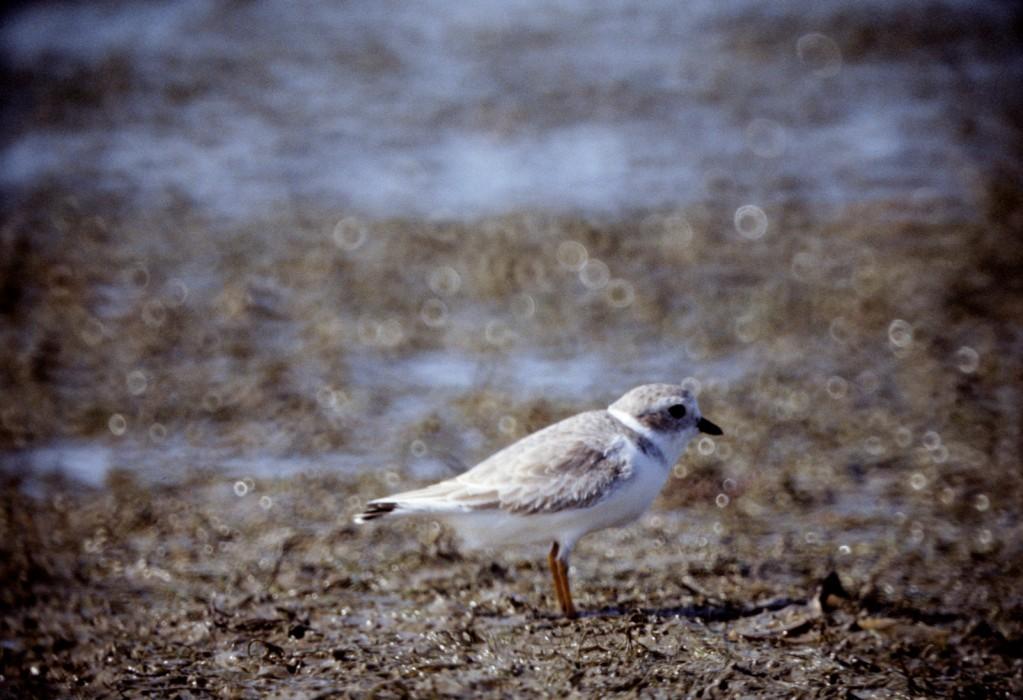Coral Reproduction and Cryopreservation
Coral in Crisis
Throughout the world coral reefs are dying. Locally, reefs are damaged by pollution, nutrients and sedimentation from poor land-use, fishing and mining practices. Globally, increased greenhouse gases are warming and acidifying oceans, making corals more susceptible to stress, bleaching and newly emerging diseases, causing a widespread reef crisis. The National Oceanographic and Atmospheric Administration made an ominous projection in 2015: “a full-fledged global bleaching event continues to be likely.” And it is certainly coming true with bleaching events happening all across the globe.
Center for Species Survival (CSS) scientist Mary Hagedorn is pioneering low-cost, high-impact reproductive technology to offset the effects of climate change on reefs. To date, CSS coral researchers have produced coral from frozen banks that are setting the stage for exciting advancements for "assisted evolution" that will produce robust hybrids more resistant to warming and acidification. In short, the future is hopeful.
Ecosystem Powerhouse
Healthy oceans produce 50 percent of the world’s oxygen, and coral reefs are one of the most important ecosystems in the oceans. Reefs nurture more than a quarter of all marine life, protect homes and cities from storms, maintain livelihoods by adding more than 300 billion dollars annually to the global economy, shelter fish, and produce future pharmaceuticals to help fight disease. Healthy oceans and reef ecosystems are vital.
Groundbreaking Science
- Created the field of coral cryo-conservation and produced the first basic studies to successfully cryopreserve coral.
- Established the first frozen repositories for nine coral species in the United States and Australia, containing 1 trillion frozen sperm and 3 billion frozen larval cells.
- Produced live coral using banked frozen and then thawed sperm, so these techniques can now be used to create new coral for our reefs.
- Banking has expanded to include reef fish testicular cells, zooxanthellae and urchins.
- Banks contain sexually produced cells, which may have new genetic adaptations to survive changing conditions in the oceans.
- Methods are successful with all coral species tested, making these practices widely applicable for all coral and extremely practical to teach to professionals worldwide.
Banking on a Future for Coral
Using procedures similar to those used in human sperm banks, Mary Hagedorn and her team have developed techniques that allow them to freeze and store coral sperm and stem cells, and in the future, possibly even adult coral fragments. Coral genetic material frozen in this way can be viable for hundreds of years. Conservationists can use the frozen sperm to generate new corals and to strengthen small populations by adding genetic diversity. Advances in human stem cell biology may one day allow the frozen stem cells to produce new adults.
Working at the Hawaii Institute of Marine Biology for the past 11 years, Hagedorn created the first frozen Hawaiian coral repository with sperm and stem cells from two species of corals from Kaneohe Bay. Techniques Hagedorn and her team developed on healthy corals in Hawaii have been taken out into the field from Puerto Rico to Singapore and applied to more imperiled corals around the world.
Hagedorn and her team have banked two endangered species in the Caribbean. From 2006 to 2009 the team worked in Puerto Rico to bank sperm and stem cells from Acropora palmata or elkhorn coral. Hagedorn and her group also traveled to Belize in 2011 to bank embryonic stem cells from the endangered species Acropora cervicornis.
Most recently, Hagedorn has traveled to the Australian Institute of Marine Science for the past several years for the Great Barrier Reef's annual spawning, helping create a bank for Australia's corals. She has also been training scientists from the Australian Institute of Marine Science and the Taronga Conservation Society in coral reef cryopreservation techniques so that they can continue to grow their Great Barrier Reef bank. The team's work in Australia has resulted in the banking of seven important reef-building species there. In 2013, coral produced with cryopreserved sperm was raised to adulthood and corals will be grown from cryopreserved embryonic cells as well.
As coral reefs die or dissolve, their structures will be lost forever. Billions of ocean creatures will lose their homes. Shorelines will be left unprotected and the world economy will be affected.
Smithsonian scientists are working toward building both live and frozen banks to guard against this imminent loss of coral reefs, and with the increasing frequency of bleaching events, they have also shifted some efforts toward understanding how these extreme stress events are affecting coral reproduction.
Understanding Basic Coral Reproduction in the Face of Global Bleaching Events
During the summer of 2015, Mary Hagedorn and her team found themselves working with coral that were impacted from bleaching events in 2014 and extreme temperatures during the spawning season causing bleaching and stress again. These stressed corals produced sperm and eggs that were less healthy than in years past, which made it practically unsuitable for cryopreservation. With that in mind, the team studied the characteristics of the impacted sperm and eggs and the embryos created from them. They also examined development, uptake of algae and settlement. Every aspect of reproduction and development was found to be impacted by the bleaching events of 2014 and 2015, making the banks from Hagedorn and her team ever more important to the survival of coral reefs on our planet, and by extension our survival, too.













